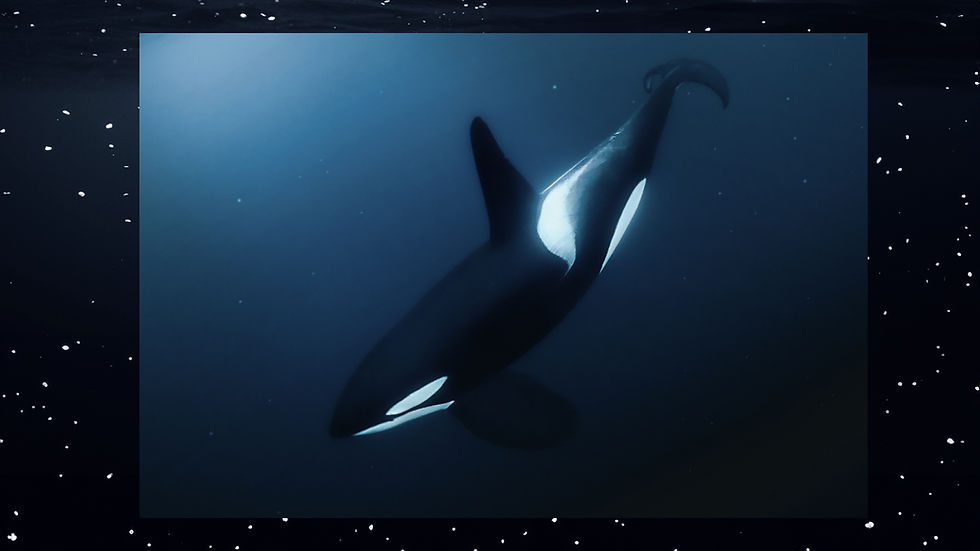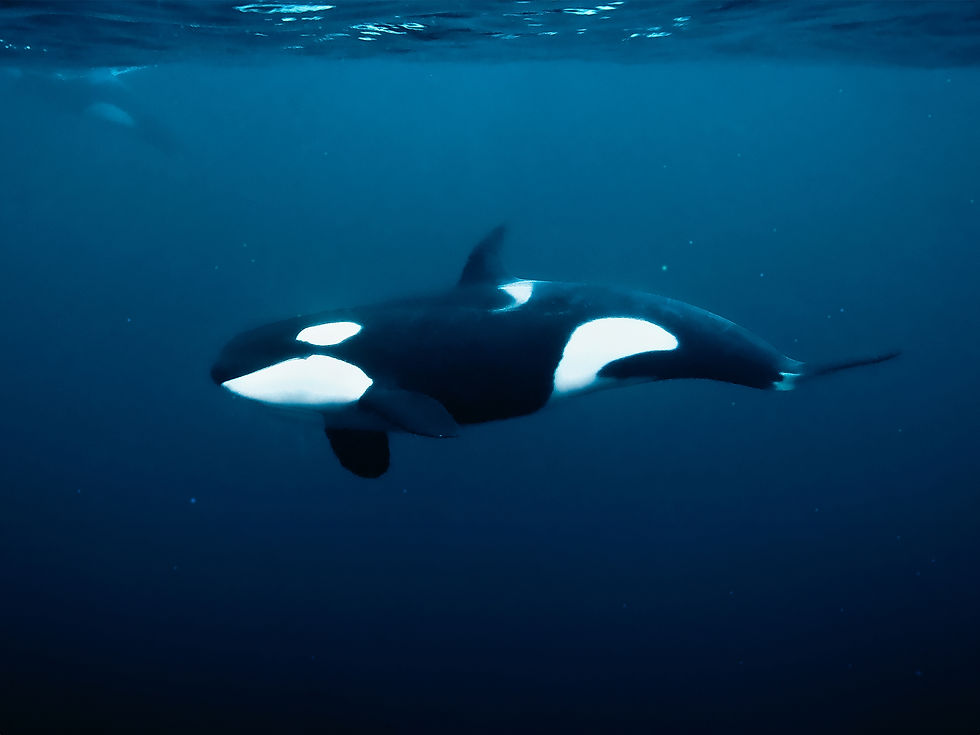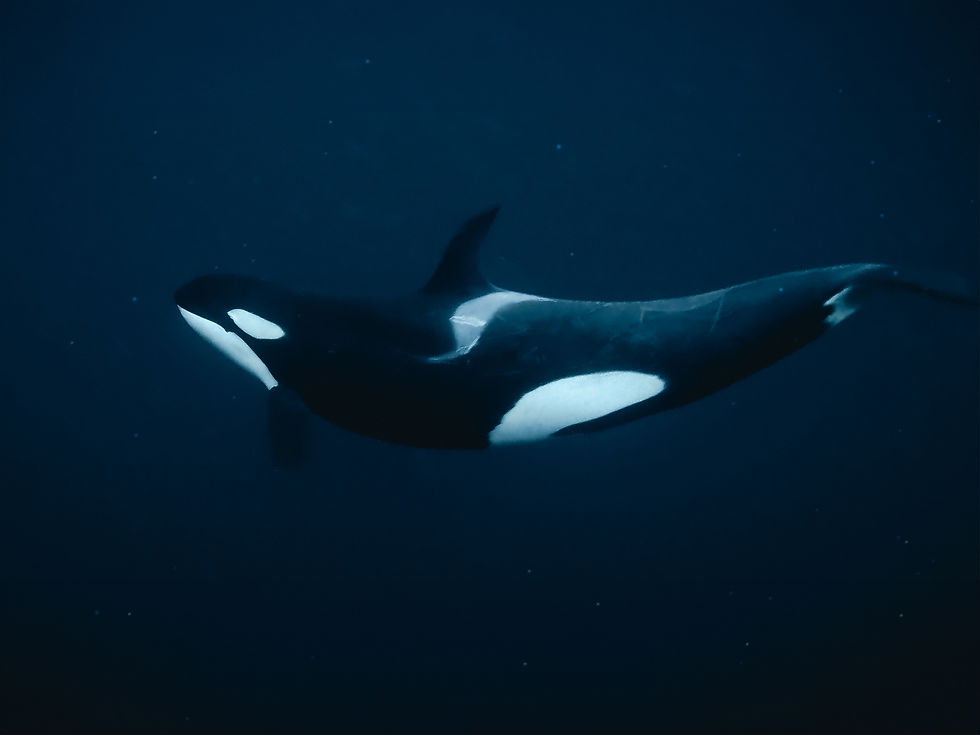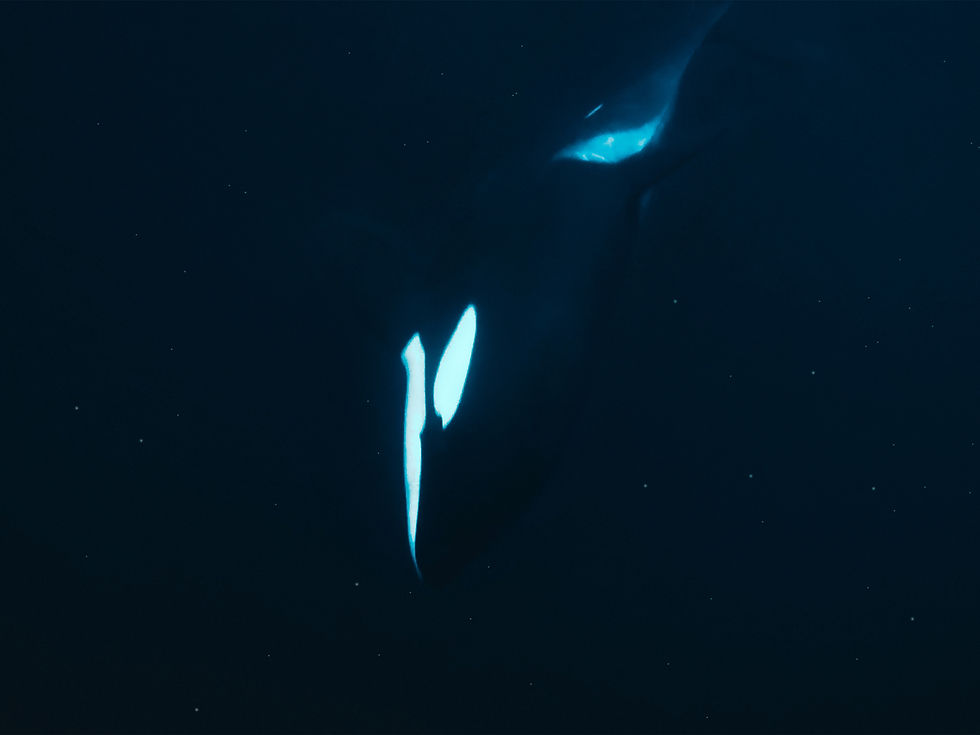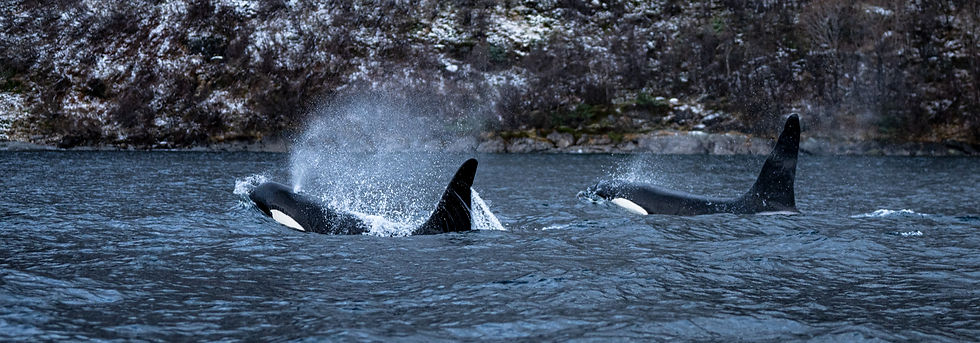
WINTER WHALES OF NORWAY
The great herring feast above the Arctic Circle in the Kvaenangen fjord
Scope of actions :
Photography / Filmaking
Location :
70.040922, 20.975191
Kvænangen fjord / NORWAY
Nature of the project :
Solo study trip
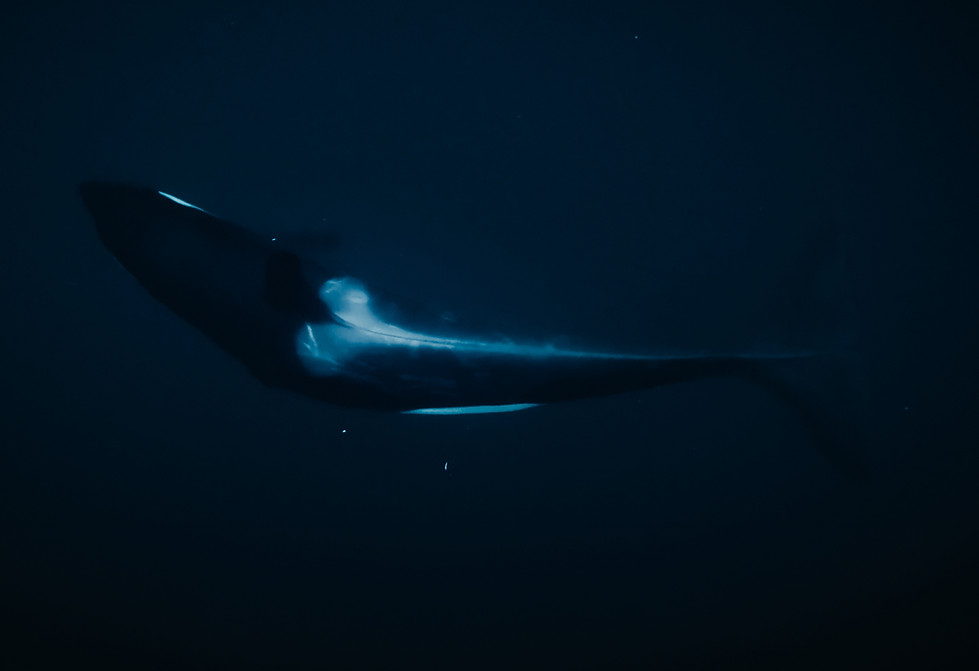
FROM AN ORCA POINT OF VIEW
My fascination with cetaceans began in childhood, sparked by the film Free Willy. Over the years, this early curiosity evolved into a deep and lasting interest, nurtured by countless documentaries exploring the behavior of orcas.
Learning about their complex social structures and emotional intelligence revealed a side of these marine mammals that goes far beyond their reputation as apex predators, they are deeply sensitive, highly intelligent beings with unique cultures of their own.
As I grew more conscious of the planet's vulnerability, I came to grasp the vital role whales play in maintaining oceanic health. The deeper I delved into their world, the clearer it became that their survival is closely linked to the wellbeing of our entire ecosystem. This realization sparked a strong desire to help preserve their habitat—the oceans—and protect the fragile balance that supports all life on Earth.
This growing awareness led to a profound fascination.
How do they hunt with such precision? Why are they so misunderstood or feared in popular culture? And how have such a wide variety of ecotypes adapted and survived across the globe?
These questions continue to fuel my passion and curiosity, driving my desire to observe them in the wild and to better understand the ecosystems they inhabit.
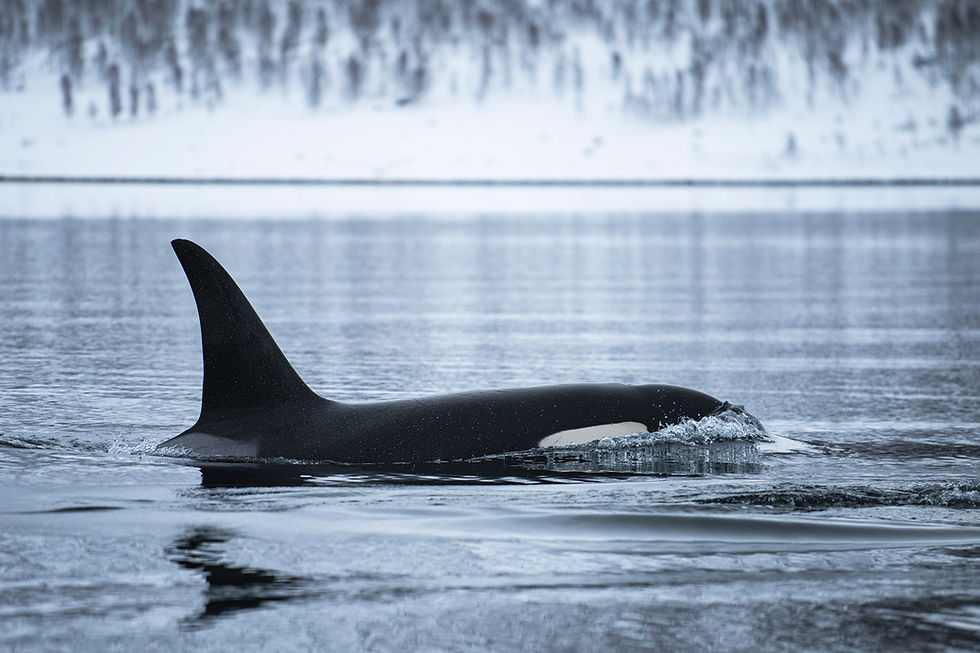
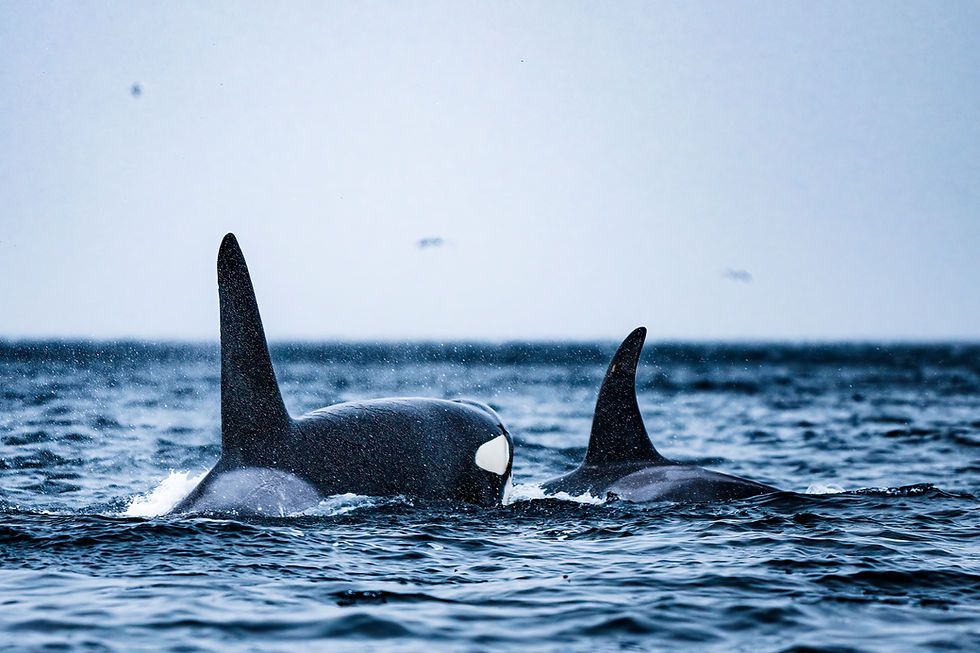
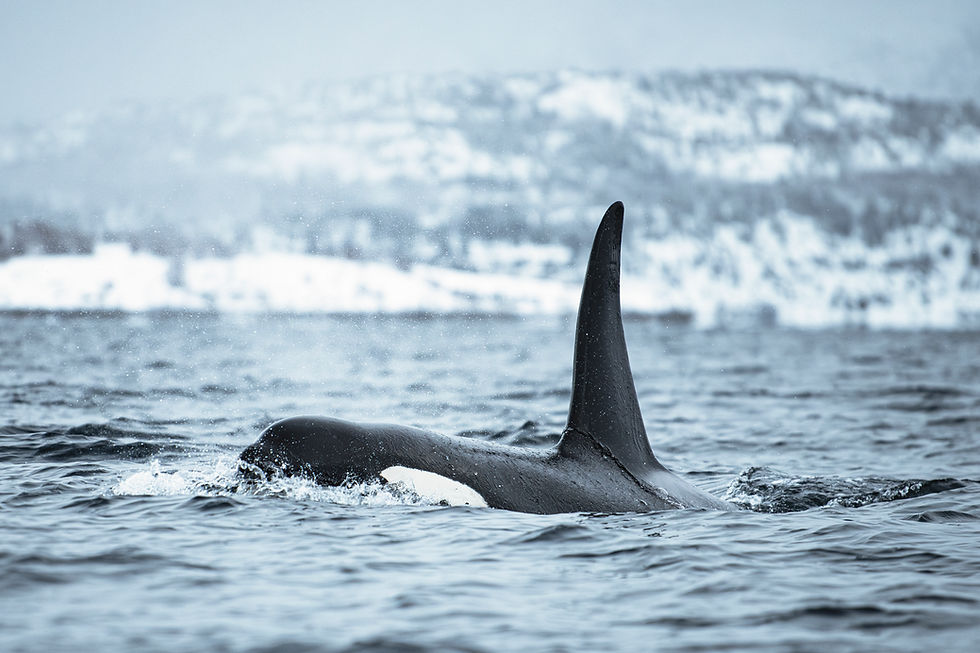

Pictures of day 2 (Jens Wilkstrom)

CAROUSEL FEEDING
Ecotype : North Atlantic Type 1
From late October to February, orcas and other whale species such as fin and humpback whales migrate to the Norwegian coasts, following the herrings, their main food source.
Carousel feeding is a sophisticated hunting technique used by Norwegian orcas (killer whales) to catch the herring. From observation, here's how it works:
-
Herding: A pod of orcas works together to locate a school of herring and corral them into a tight ball near the surface or against the ice.
-
Bubbling and flashing: The orcas blow bubbles and use their white bellies to confuse and frighten the fish, tightening the bait ball.
-
Tail-slapping (carousel moment): One orca then strikes the bait ball with a powerful tail slap, stunning or killing multiple fish at once.
-
Feeding: The orcas take turns swimming through the stunned fish to feed, often methodically and without competition among pod members.
